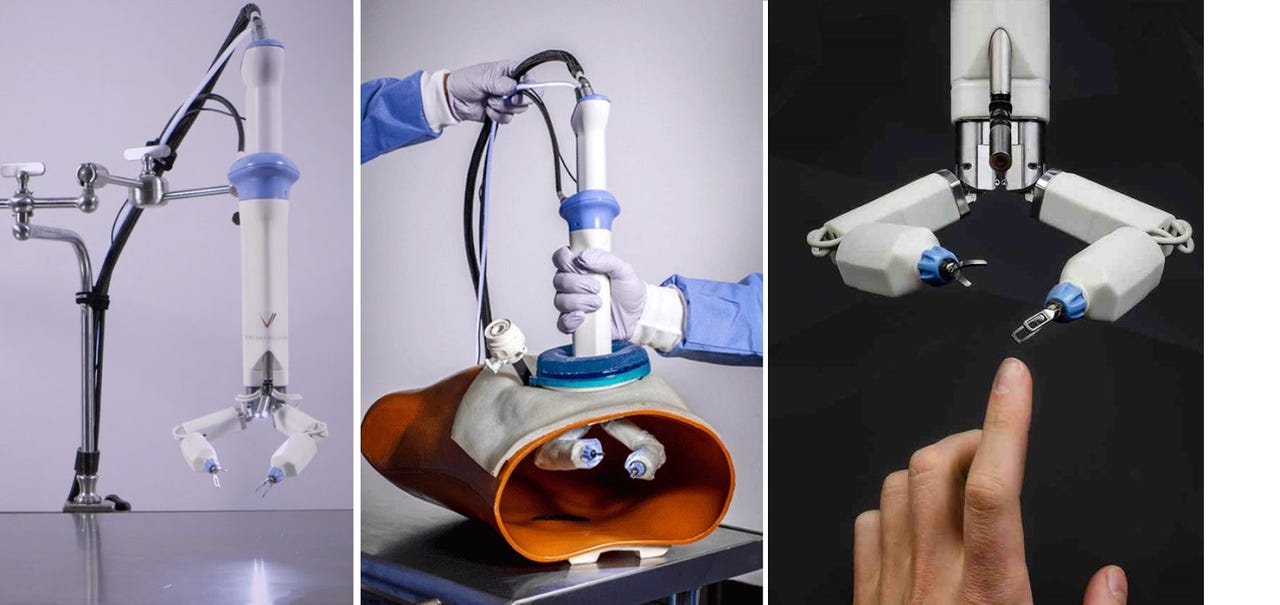Robot operates from inside patient for first time


Robotics
My best friend is a surgeon. If there's one thing I've learned observing his lifelong pursuit it's that surgery is a stunning craft, imbued with artistry and the fullest range of human dexterity and nimbleness.
So it can be a sore subject when we talk about robots. The Da Vinci broke some important ground, but robot surgery is still in its early phases. It's coming, though, and fast.
A new robotic surgical tool has been used in human trials for the first time.
Virtual Incision, a spin-off out of the University of Nebraska, has been developing a miniaturized robot for general surgery procedures. The device, which looks a little like a crab, was successfully used in colon resections performed in Asunción, Paraguay.
Unlike the Da Vinci, the Virtual Incision robot operates from inside the abdomen. Let me repeat: Inside the abdomen. It does so via what I can only assume is an uncomfortable umbilical incision. The upshot is that the robot is small and doesn't require a specialized operating room, making it more adaptive for broad-scale rollout in current facilities.
The burgeoning field of robotic surgery is dominated by Intuitive Surgical, which makes the Da Vinci Surgical System. Intuitive received FDA clearance for the da Vinci in 2000, though at that time it wasn't clear how readily surgeons would adopt the new technology or how patients would react to it.
But the Da Vinci proved its usefulness early on by reducing complications associated with prostate removal. Because of the position of the prostate, surgeons have to enter through the abdomen and then tunnel down to reach it. The invasiveness of the procedure carries high risks, and two common complications are incontinence and impotence. The Da Vinci uses long pencil-like rods in place of a surgeon's hands, meaning surgeries performed with it are less invasive and significantly reducing complications and recovery times.
Hundreds of thousands of surgeries are now conducted with Da Vinci systems each year--virtually every prostate patient with a choice opts for it--and robotic surgery has quickly passed the crucial adoption threshold. Intuitive Surgical now has an $18.2B market cap.
Obviously that's made other medical device developers take note. A slew of new robotic surgical tools are on the way. With its early human test, Virtual Incision's bot is on a promising path.
"Virtual Incision's robotically assisted surgical device achieved proof-of-concept in highly complex abdominal procedures," said head surgeon Dmitry Oleynikov, chief of minimally invasive surgery at the University of Nebraska Medical Center and co-founder of Virtual Incision. "Additionally, we verified that our extensive regimen of bench, animal, cadaver, biocompatibility, sterilization, electrical safety, software, human factors and other testing enabled the safe use of this innovative technology."
Robotic surgery is compelling for its promise to mitigate risk associated with human error. But robots may also open up new frontiers in telemedicine. It's entirely possible that specialist surgeons will one day operate remotely, a possibility the DOD is investigating aggressively.